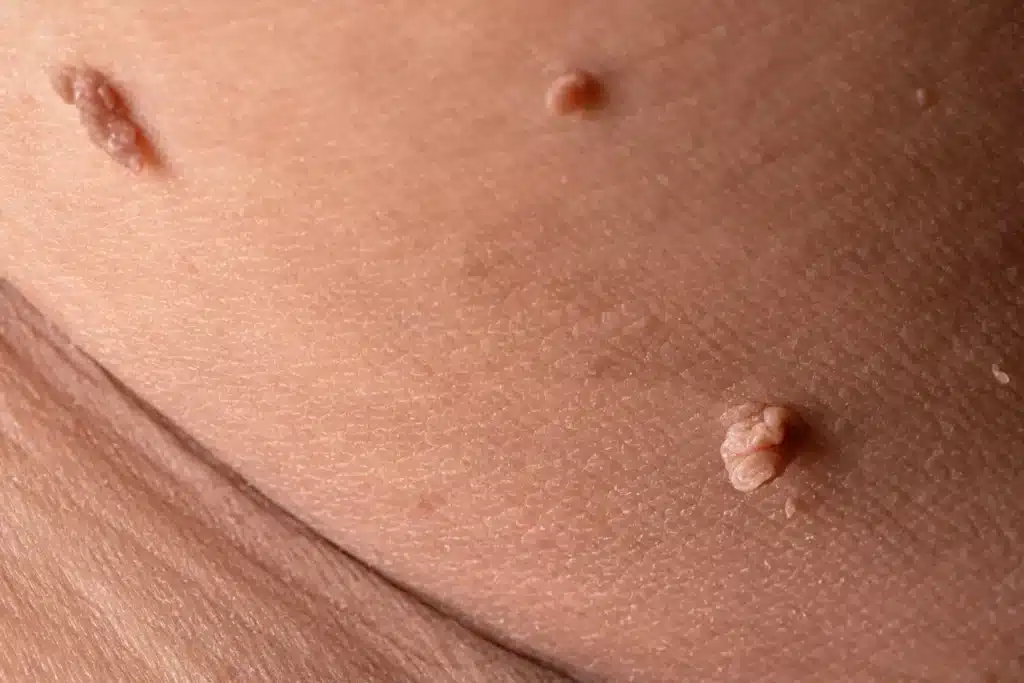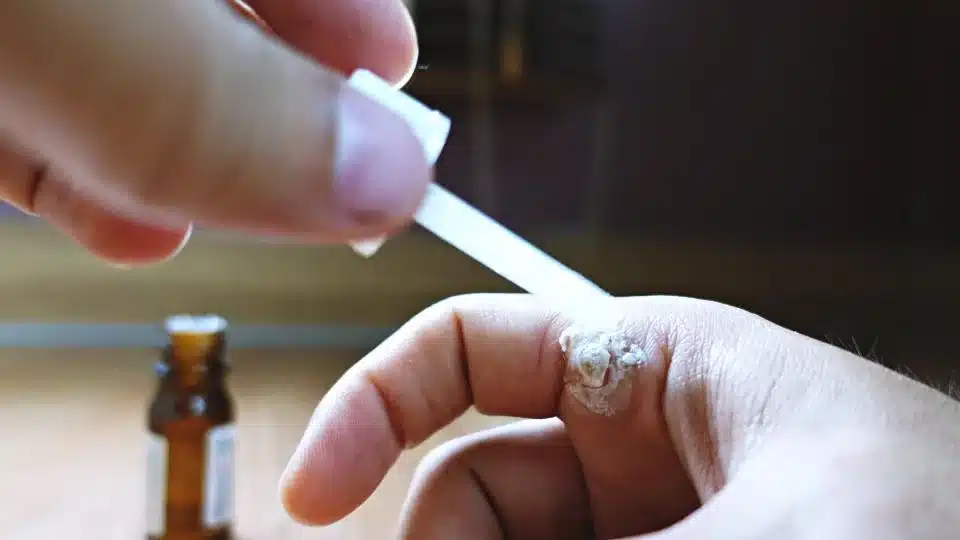Looking for skin tag removal?
Skin tags, medically known as acrochordons, are benign (non-cancerous) skin growths. They are often flesh-coloured or slightly darker and have a soft, fleshy feel. Skin tags are commonly found where skin rubs against skin or clothing, such as the neck, armpits, groin, eyelids, and under the breasts.
Skin tags are composed of a fibrovascular tissue core surrounded by a thin skin sheath. They are typically painless and do not cause symptoms unless they become irritated or snagged on something, leading to discomfort or bleeding.
The exact cause of skin tags is not fully understood, but certain factors are believed to contribute to their development:
People in Singapore may choose to remove skin tags for various reasons:

Topical skin tag removal creams often contain active ingredients like salicylic acid or tea tree oil, which can break down the skin tag over time. The creams are applied directly to the tag, allowing the active ingredients to penetrate and potentially cause the tag to loosen and fall off. However, their specificity and effectiveness are relatively low, and they are prone to causing skin irritation, allergic reactions, collateral damage, scarring and pigmentary changes. Larger or stubborn tags will not respond and may require professional removal procedures.


Cryotherapy involves freezing the skin tag with liquid nitrogen, causing the tissue to be destroyed and the tag to eventually fall off. This can have drawbacks such as discomfort, redness, or blistering as well as the risk of scarring, pigmentation changes, or damage to surrounding healthy skin. Multiple cryotherapy sessions may be required, and larger or stubborn tags may not respond. Compared to newer skin tag removal methods, cryotherapy lacks precision.
CO2 laser is strongly absorbed by water in cells under the skin. Laser energy vaporizes a layer of skin cells together with a surrounding zone of coagulation. Ultrapulse CO2 produces very short pulses of laser energy with high peak power. The amount of tissue vaporization vs coagulation can be tailored, allowing for precise vaporization of only the abnormal tissue without causing too much collateral damage. The entire process results in successful skin tag removal treatment.
High-frequency radiofrequency is strongly absorbed by water in cells causing vaporization or coagulation depending on the waveform. It can be used to dissect out skin tags or coagulate them.
Skin tag ligation uses a surgical thread around the base of a skin tag to cut off its blood supply. Compared to other removal methods, drawbacks include longer treatment duration, potential discomfort or pain caused by the tight thread, limited applicability to smaller tags with defined stalks, the possibility of incomplete removal leading to recurrence, and a risk of infection.

Surgical or snip excision involves physically removing the skin tag at its base using a scalpel or sharp surgical scissors. Whilst fast and relatively simple to perform, there is more bleeding compared to laser or radiofrequency methods and hence poorer visibility during the procedure. This increases the risk of going too superficial or deep, resulting in potentially higher risks of recurrence or scarring.
Skin tags that are unusual in appearance or do not respond to other treatments may need to be surgically removed and sent for a biopsy to rule out the possibility of skin cancer.
Skin tags, those pesky and often bothersome growths on the skin, can be a source of frustration for many individuals. While there are various methods available for their removal, it is crucial to approach the process with care and seek professional assistance.
I strongly advise against cutting off skin tags with nail clippers or scissors yourself. While tempting and technically possible to cut off a skin tag with nail clippers or scissors yourself, self-removal can lead to incomplete removal, bleeding, infection, pain, and potential misdiagnosis. Additionally, it can result in scarring and (completely unnecessary) damage to unhealthy surrounding tissue.
Creams, cryotherapy, ligation, and snip excision have been commonly used to address skin tags. However, these approaches can be messy, imprecise, and potentially lead to complications. Unprofessional or self-attempted removals carry risks such as misdiagnosis, incomplete removal, bleeding, and scarring.
During removal, if the affected tissue is not eliminated, some cells may remain and regrow, leading to recurrence. Incomplete removal can occur more frequently if the skin tag is large, complex, or has a broad base. It is essential to seek proper medical attention to ensure accurate diagnosis, complete removal, and minimize potential risks.
Precision methods, such as high-frequency radiofrequency and ultrapulse CO2 treatments, offer greater control and accuracy. These techniques allow us to precisely target and vaporize affected cells while preserving the surrounding healthy skin. By ensuring the complete elimination of abnormal tissue and minimizing collateral damage, we can better achieve optimal outcomes with a reduced risk of complications such as scarring or post-inflammatory hyperpigmentation.

FOUNDER / MEDICAL DIRECTOR

Patients often wonder if a general practitioner (GP) or beautician can handle skin tag removal. While GPs may handle simple cases, they may lack the specialized equipment and experience required for more complex methods or dealing with potential complications such as keloid scarring.
Opting for beauticians, despite the allure of lower costs, presents risks due to their lack of proper training and qualifications. I strongly advise against such options, as they can lead to complications. It is crucial to entrust skin tag removal to qualified medical professionals who prioritize accuracy and safety.
Skin tag removal costs in Singapore can range widely from less than $100 to more than a thousand dollars. Prices can vary significantly, depending on factors such as the chosen medical aesthetic method, the number of skin tags, and the complexity of the procedure.
While cost-consciousness is understandable, it is important to remember that investing a bit more for a better outcome can be a wise decision. Skin tag removal is generally more affordable than the removal of other skin conditions like moles, warts, or cysts. By prioritizing quality over cost, patients can achieve the optimal results they desire.
Address:
1Aesthetics, Medical & Surgery
#14-90 The Central Tower 1
8 Eu Tong Sen Street
Singapore 059818
Mon-Fri 9 AM to 7 PM
Sat 9 AM to 3 PM
Phone / WhatsApp:
+65 66125173 / +65 84899962
Email:
[email protected]